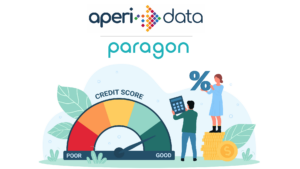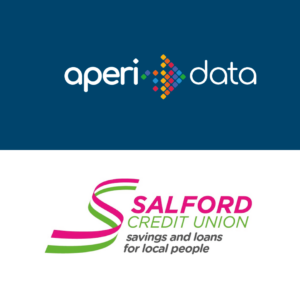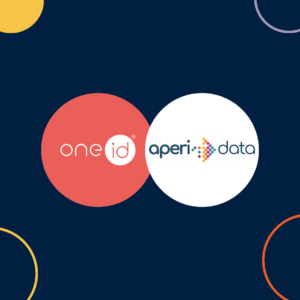Traditional affordability checks capture a moment in time. A static snapshot that misses the complex patterns of financial hardship and vulnerability.
Think about it. Payslips, bank statements and credit scores tell you what happened yesterday but say little about today or tomorrow. Open Banking flips this approach, offering a real-time view of financial behaviours that provides a comprehensive financial health assessment.
I know what you’re thinking—isn’t this just another way to check if someone can afford a loan? Not quite. Let me explain why this shift matters.
Why affordability doesn’t tell the full story
Traditional affordability metrics create a false binary: can afford or can’t afford. They fail to capture the full spectrum of financial hardship or vulnerability that exists in between.
A customer might technically “pass” an affordability check but still display concerning financial patterns. Perhaps they’re using savings to cover essential bills, relying increasingly on overdrafts, or making minimum payments on mounting debts. These behaviours might not trigger traditional risk flags but clearly indicate developing vulnerability.
Of course, conventional assessments also struggle with inconsistent income patterns. As discussed in a recent blog, zero-hour contracts, self-employment, and the gig economy have created earning structures that don’t fit neatly into traditional affordability frameworks.
By the way: this explains why so many financially stable individuals still get declined for financial products—they don’t match outdated assessment criteria.
The financial hardship-proof paradox
On top of that, here’s something rarely discussed: many support systems designed to help those in financial hardship actually require proof—documentation that can be surprisingly difficult to provide.
Individuals often need to prove their situation to access certain benefits, tariffs, debt relief schemes, or support services. Traditional methods rely heavily on formal documentation—benefit award letters, multiple bank statements, or payslips showing low income.
The irony? Those who are deepest in financial hardship often have the most fragmented financial documentation. They might be unbanked or partially banked, work in cash-based irregular employment, or have financial records scattered across multiple services, including high-cost lenders and alternative financial products.
Naturally, this creates a catch-22 situation: those most in need of support often struggle the most to prove their eligibility for it.
Digital verification: Open Banking as documentary evidence
Open Banking is the gold standard for affordability and financial hardship verification. Instead of requiring customers to compile and submit extensive documentation—a process that’s often distressing and time-consuming—Open Banking provides a digital verification path.
With consent, individuals can share financial data that provides a complete view of their financial circumstances, including:
- Total income across all accounts and payment methods
- Essential and non-essential spending requirements and obligations
- Debt burden and repayment capacity
- Evidence of persistent financial shortfalls
- Reliance on high-cost credit or other alternative financing
This has practical implications across multiple support systems:
- Utility companies can automatically verify eligibility for social tariffs or discretionary credit
- Housing associations can tailor rent payment plans to actual income patterns
- Local authorities can streamline hardship fund application processes
- Citizens Advice services can quickly assess options without manual, lengthy income and expenditure assessments
In fact, we’ve spoken to organisations that have reduced the verification process from weeks to minutes while simultaneously improving accuracy and reducing stress for vulnerable customers.
Real-time financial DNA: What Open Banking actually reveals
Open Banking data provides what we might call financial DNA—detailed patterns and behaviours that tell a much richer story than a credit score ever could.
Let’s be more specific here. Open Banking can reveal:
- Income stability and volatility across multiple accounts
- Spending patterns on essentials versus discretionary items
- Early signs of financial stress, like increased reliance on credit
- Evidence of gambling, high-cost credit, or other potentially harmful financial activities
- Changes in financial behaviour that might indicate life events or emerging difficulties
This detailed insight allows organisations to move from binary decisions to nuanced support strategies.
Case in point, Citizens Advice branches across the UK have transformed their approach using Open Banking data from AperiData in partnership with PayPoint. What once took caseworkers three weeks to gather financial information for debt advice now takes just three minutes.
As Charlotte Blizzard-Welch, CEO of Citizens Advice Stevenage puts it: “This removes barriers to people engaging with debt advice and creates momentum for the people we help to start feeling the benefit.” With fully categorised financial data instantly available, advisors can focus on solutions rather than paperwork collection.
With proper consent, individuals can share standardised financial data that provides a complete view of their financial circumstances, including:
- Total income across all accounts and payment methods
- Essential spending requirements and obligations
- Debt burden and repayment capacity
- Evidence of persistent financial shortfalls
- Reliance on high-cost credit or other alternative financing
This has practical implications across multiple support systems, allowing countless organisations to streamline hardship verification while improving accuracy and reducing stress for those already in difficult situations.
Standardising hardship assessments: consistency in support eligibility
One of the most overlooked benefits of Open Banking in vulnerability support is standardisation. Currently, different support services use wildly different criteria and evidence requirements to determine eligibility.
A customer might qualify as financially vulnerable with their energy provider but not with their water company, despite both assessments looking at the same financial circumstances. This inconsistency creates confusion and barriers to comprehensive support.
Open Banking offers the potential for standardised financial hardship assessment frameworks—consistent approaches to determining eligibility that could be used across multiple support services. This would allow vulnerable customers to qualify once and access multiple support programmes, significantly reducing the bureaucratic burden of repeatedly proving hardship.
Of course, this doesn’t mean a one-size-fits-all approach. Different sectors might still have specific threshold criteria, but the underlying financial assessment methodology could be consistent.
The telltale signs: spotting vulnerability through transactions
Transaction data speaks volumes about vulnerability if you know what to look for. A surprising number of vulnerability indicators show up in transaction patterns long before a customer reaches out for help.
Consider these warning signs that Open Banking data can identify:
- Regular income is being replaced by benefit payments
- Essential spending is gradually crowding out all discretionary spending
- Increasing reliance on short-term, high-cost credit
- Sudden changes in transaction patterns suggesting life events (job loss, relationship breakdown)
- Gambling transactions increasing in frequency or amount
Transaction data speaks volumes about vulnerability if you know what to look for. A surprising number of vulnerability indicators show up in transaction patterns long before a customer reaches out for help.
For instance, Hannah, a young single parent, received timely intervention when Open Banking revealed her significant spending on leisure instead of priority bills like rent. This enabled immediate conversations about budgeting and arranging direct rent payments through Universal Credit—interventions that traditional processes might have missed for months.
Or consider Jane, who struggled for four months to provide bank statements, stalling her debt advice process completely. When she consented to Open Banking, her advisor instantly identified significant gambling transactions, leading to appropriate addiction support alongside financial advice—addressing the root cause rather than just the symptoms.
These aren’t isolated cases. Open Banking tools regularly uncover crucial warning signs that traditional approaches might miss, catching problems before they become crises.
The privacy paradox: ethical use of financial data
Here’s the challenge—the more data we have, the better we can support vulnerability, but this creates legitimate privacy concerns.
Financial institutions face a delicate balancing act. How do you leverage detailed financial data to identify vulnerability without intruding on customers’ privacy? How do you ensure data used for support isn’t misused for exclusion?
That’s why consent management must be at the heart of Open Banking vulnerability support. Customers need to explicitly consent to:
- What data is accessed and analysed
- How long that access remains valid
- How insights derived from their data will be used
- The right to withdraw consent at any time
Here’s how this works at AperiData:
Rethinking the verification process
Let’s be honest—traditional verification processes can be dehumanising. Requiring people to repeatedly demonstrate their financial hardship through extensive documentation or intrusive questioning undermines dignity and can deter help-seeking.
Open Banking offers a more dignified alternative. Rather than subjecting customers to detailed questioning about their spending habits or requiring them to justify financial choices, the data speaks for itself in a standardised, non-judgmental format.
For advice agencies and support services, this shifts the conversation from “prove to me you’re in need” to “I can see your situation; now, let’s discuss how we can help.” That’s a profound change in vulnerability support.
When the hardship verification process becomes less intrusive and more dignified, engagement with support services typically increases. People are more willing to seek help when the process respects their privacy and dignity.
Technology’s role in understanding financial patterns
Making sense of thousands of transactions across multiple accounts isn’t humanly possible without technological support. That’s where the right software comes in.
Solutions like AperiData can process vast amounts of transaction data to identify patterns human analysts might miss. Machine learning can spot subtle changes in financial behaviour that might indicate emerging vulnerability. But the goal isn’t to replace human judgment. Instead, it acts as an early warning system, flagging potential concerns for human review. The best vulnerability support combines algorithmic pattern recognition with human empathy and understanding.
So what does this look like in practice? Here are some ways organisations are using Open Banking data to support vulnerable customers:
- Creating tailored financial products for customers with irregular income
- Providing targeted financial education based on specific spending behaviours
- Identifying suitable debt consolidation options for those with multiple credit commitments
- Automatically identifying customers who might qualify for financial assistance or benefits
- Creating fair and flexible repayment plans for customers who have fallen behind with their payments
You know what’s interesting? Institutions that implement these approaches often report better customer retention and lower default rates. Supporting vulnerability isn’t just ethically right—it makes business sense, too.
Embracing Open Banking for hardship assessment and vulnerability support
The technology exists. The regulatory framework supports it. The business case makes sense. Now organisations need to take action to adopt Open Banking for vulnerability support.
This means investing in:
- Technical capabilities to process and analyse Open Banking data
- Staff training to interpret vulnerability indicators
- Clear vulnerability support pathways
- Strong data governance and consent management
- Collaborative relationships with support organisations
Isn’t it time we moved beyond asking whether someone can afford a loan today and started using financial data to support their financial well-being for tomorrow? Keen to see how we can help? Contact us today.




